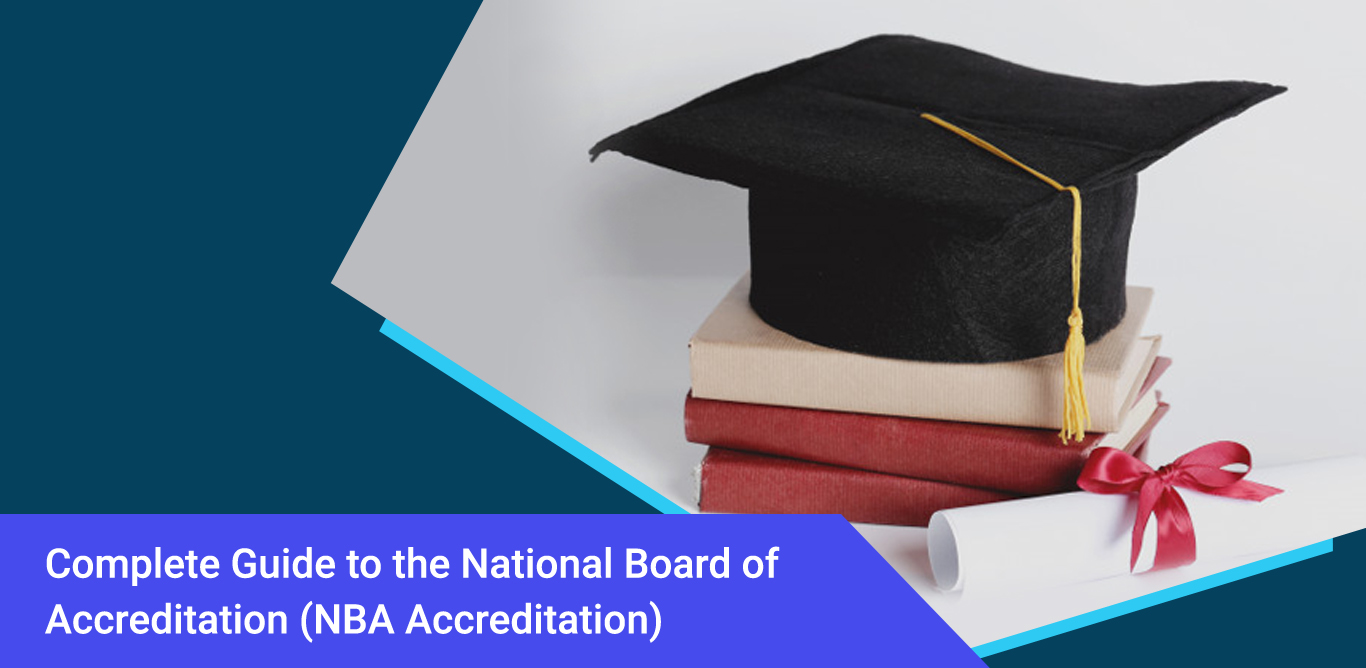10, March 2022
One of the most revered professions is that of an engineer, which ensures not only a bright future for the learners. Therefore, hundreds and thousands of students across the country prepare themselves with the sole goal to pursue engineering in higher education. But after completing high school, students often face difficulty in choosing an appropriate college.
With multiple institutions offering varied programs and courses, students get confused in regards to choosing the appropriate one. Consequently, they follow the advice of their uninformed acquaintances and regret it after making the decision.
Institutions that are accredited by accreditation bodies such as NAAC ensure that they provide quality education, including proper student support. It also increases the credibility of the students in comparison to other university students.
Similarly, NBA accredited institutes and universities provide an extra edge to the learners, as they get better opportunities and varied exposure to desired fields of interest. But what does it take for the institutes to get accredited, who are the accrediting bodies and what are the major benefits?
What is Washington Accord?
The Washington Accord is a multi-lateral agreement between agencies or bodies that are responsible for providing accreditation and recognition to undergraduate-level engineering qualifications. Additionally, it is a part of the International Engineering Alliance(IIEA) which comprise educational accords for professional engineers, engineering technologists, and engineering technicians with two professional engineering agreements and one engineering technologist competency agreement.
In 1989, the accord was signed between national accreditation bodies and member countries involved in recognising tertiary-level engineering qualifications within their jurisdictions. Furthermore, they agreed to work collectively to ensure the mobility of engineers across the member countries.
The accord is a self-governing autonomous agreement between national organisations that provide external accreditation to undergraduate programs that qualify their graduates for entry into professional engineering practices.
The agreement refers to undergraduate programs to the tertiary level education program that is usually undertaken after high school.
Purpose of the Washington Accord
The national organisations (signatories) maintain a clearly defined periodic review process to ensure that each other’s accredited programs are fairly equivalent. They also ensure that their outcomes are consistent with the published professional engineer graduate attribute exemplar. For instance, in 1989, the six original signatory bodies from countries of Australia, Canada, Ireland, New Zealand, the United Kingdom and the US made a confirmation. They concluded that their processes, policies, criteria, and requirements to grant accreditation to University level programs were substantially equivalent.
Similarly, they agreed to allow the same rights and privileges to graduate programs accredited by other signatories as their own accredited programs. On the other hand, graduates of accredited programs in the signatory country will likewise be recognised by the countries and treated accordingly. The programs of these countries will meet the professional and academic essentials and standards, respectively.
It is noteworthy to mention that the accord covers undergraduate engineering degrees, and it does not include engineering technology and Postgraduate programs.
NAAC Accreditation: Guide To National Assessment And Accreditation Council (NAAC) For Higher Education
What is the process for the membership of the Washington Accord?
To acquire the signatory status under the accord, the body or the organisation must demonstrate that its processes and standards are substantial. The review of the body is conducted by a team drawn from the signatories; hence it must be approved by the unanimous agreement of the signatories.
As of 2019, the accord has 21 signatories with full rights to participation, including the United States, United Kingdom, Canada, Ireland, Russia, China, Hong Kong, Singapore, among others. India was able to gain provisional signatory status in Washington accord accreditation since 2007, but in 2014, it became a signatory member.
Additionally, there are seven provisional signatories, which include Thailand, Indonesia, Bangladesh, etc.
Also, the National Board of Accreditation of India(NBA) represents India as the member organisation amongst the signatories in the accord. Hence, the institutes that look forward to getting the accreditation, work towards improving the curriculum development and overall institutional performance.
What are the advantages of the Washington Accord?
The accord helps to provide mutual recognition to accredited engineering degree programs given by the member bodies. It also established specific standards for professional engineering education across the bodies.
Signatory members of the accord agree to grant or allow the graduates of each other’s accredited programs the same recognition, rights, privileges as they grant to the graduates of their own accredited programs.
With the help of these provisions, the accord helps in the mobility of graduates between member countries. Simultaneously, it also helps to provide a greater understanding and recognition of their engineering education and accreditation systems.
This means that engineering graduates can travel to signatory territories to pursue better employment opportunities within the engineering field.
It also helps to pursue post-graduate studies in the signatory countries as these countries recognise under-graduate engineering programs in India.
One of the important Washington accord benefits is that it has facilitated the recognition and portability of educational qualifications and skills in the global industry.
Conclusion
India has a dearth of employment opportunities, which is interconnected with the graduates being underskilled. Therefore, they need better teaching methodologies and appropriate student support and initiate further reforms in undergraduate engineering programs. Although India has been recognised under the accord, the institutes need to work towards developing the quality of education.
Manage Accreditation-related Data & Enhance Quality Assurance Standards of Your Institution!
Mobile: 08448010216
Email:info@mastersofterp.com













